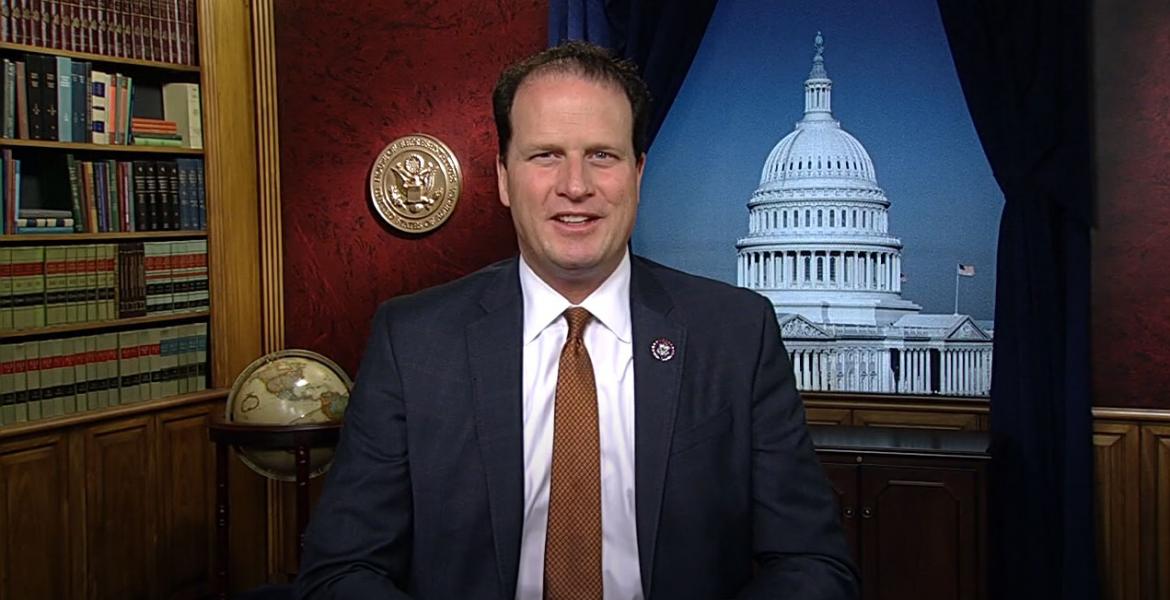WASHINGTON, DC — Congressman August Pfluger (TX-11) announced the introduction Thursday of the "Show the Data Act of 2024," legislation aimed at protecting the Permian Basin from regulations brought down by the Environmental Protection Agency (EPA) based on out-of-state monitors.
This bill builds on the Energy & Commerce Committee's National Ambient Air Quality Standards (NAAQS) reform legislation by mandating that any nonattainment redesignation by the EPA must be based on air quality monitor data from within the state of the area or counties being redesignated.
"The EPA has relied too heavily on modeling and data from behind closed doors to attempt to redesignate areas like the Permian Basin without sufficient and direct evidence from monitors in that state," Pfluger stated. "This bill ensures that decisions impacting our communities and energy security are based on transparent, local data rather than distant estimates and models."
Background:
- In the summer of 2022, the EPA released a regulatory agenda that included the consideration of redesignation of ozone attainment in the Permian Basin. This discretionary action, if finalized, would impose new regulatory burdens on the U.S. oil and natural gas industry, exacerbating inflationary pressures and increasing energy prices for consumers. The environmental group WildEarth Guardians formally petitioned the EPA for the nonattainment designation in March 2021 and, roughly six months later, warned the agency of its intent to sue to force action. The action was listed as “nonsignificant,” meaning it would not be subject to the Office of Management and Budget (OMB) review.
- The EPA has based this potential redesignation on data from monitors in New Mexico, as the agency does not have monitors on the Texas side of the Permian Basin.
Nonattainment Redesignation Process:
- A nonattainment area is an area considered to have air quality that does not meet the 2015 ozone NAAQS under the Clean Air Act. In 2015, the EPA revised the primary 8-hour NAAQS for ground-level ozone from 0.075 parts per million (ppm) to 0.070 ppm. The EPA also revised the secondary NAAQS for ozone to be the same as the primary standard. EPA recently announced a reconsideration of the 2020 decision to retain 2015 standards.
- Clean Air Act (CAA) section 107(d)(3) outlines the process for redesignation from attainment to nonattainment, beginning with notification to state governors, including an opportunity for affected states to provide feedback and concluding with a final redesignation no sooner than 240 days from the date of the notification letter(s). As part of any potential redesignation effort, the EPA would also provide an opportunity for public comment on the action.
- After a final ruling, the Texas Commission on Environmental Quality (TCEQ) would have three years to develop plans for lowering ozone levels. This could include preventing new industrial facilities from worsening air quality and ensuring existing sites deploy detecting technology.
Economic Impact:
- TCEQ prepared a report in 2017 after San Antonio was identified as being in non-attainment for ground-level ozone in 2015. The report roughly projected that the cost across the San Antonio metropolitan area would be between $3 billion (low estimate) and $36 billion (high estimate). These costs were largely incurred due to the inability of manufacturing to expand or relocate to the region. Additional costs included employment and income loss, permitting costs, project delays, reductions in Gross Regional Product (GRP) due to inspection fees, road construction delays, and more.
- A non-attainment redesignation will have considerable negative local impacts that cannot be understated. In rural America, the energy industry generates high-paying jobs for working families and drives the Texas and New Mexico economies. Additionally, the industry annually contributes over $20 billion to state and local coffers to fund public education, emergency responders, hospitals, conservation projects, and more. If the EPA finalizes this redesignation, many rural communities will face substantial economic hardship.
Permian Basin Environmental Record:
- The Permian Basin is proud of its environmental record, with producers leading the world in emissions reduction, innovation, and sustainable practices. Producers in the Permian Basin continue to reduce emissions of ozone precursors while increasing energy production. Methane emissions intensity in the Permian dropped nearly 70% between 2011 and 2020, even as oil and natural gas production in the region rose by over 320%.
- Nationwide, air quality continues to improve. Since 1990, ozone concentrations have decreased by 25%, and emissions of ozone precursors, like volatile organic compounds and nitrogen oxides, have dropped by 47% and 65%, respectively.
Pfluger Action:
- July 14, 2022: Initial Letter to Environmental Protection Agency regarding non-attainment
- May 10, 2023: Energy & Commerce Committee EPA Budget Hearing with EPA Administrator Michael Regan
- May 23, 2023: Call with EPA Regional Administrator for Region 6, Dr. Earthea Nance
- May 25, 2023: Call with Governor Abbott
- FY2024 Appropriations Amendment: No funds shall be used to redesignate the Permian Basin under ozone non-attainment under the Clean Air Act.
- May 10, 2024: Region 6 Administrator Nance visited the Permian Basin.
- May 15, 2024: Energy & Commerce Committee EPA Budget Hearing with EPA Administrator Michael Regan
- July 10, 2024: Show the Data Act of 2024 Introduced
“Congressman Pfluger remains committed to ensuring that regulatory decisions impacting Texas and the broader energy sector are grounded in accurate and transparent data,” information states. “The Show the Data Act of 2024 is a significant step towards achieving this goal.”
Subscribe to the LIVE! Daily
Required






Post a comment to this article here: